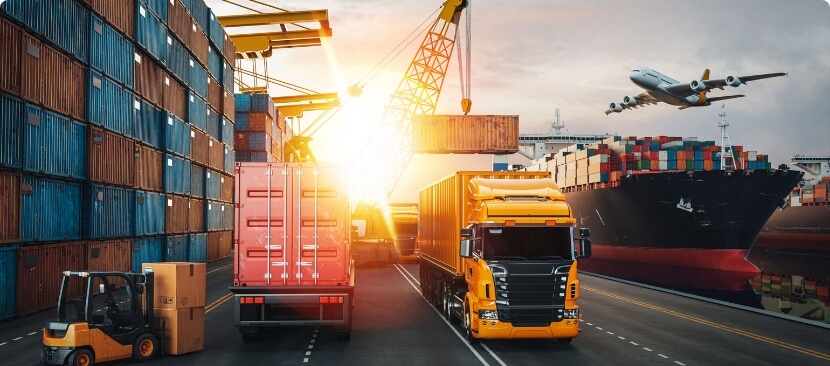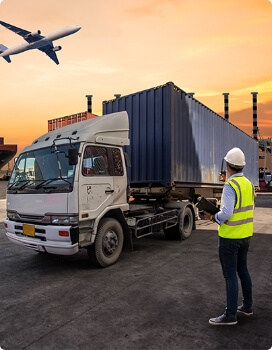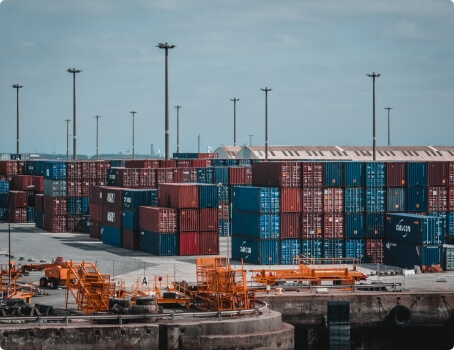
The top logistics trends
The Top Logistics Trends in 2024: Shaping the Future of Supply Chain Management
The logistics industry is constantly evolving, driven by technological advancements, changing consumer behaviors, and global economic shifts. As we navigate through 2024, several key trends are set to redefine the landscape of logistics and supply chain management. In this blog, we explore the top logistics trends of 2024, highlighting how they are transforming the industry and what businesses can do to stay ahead.
1.Artificial Intelligence and Machine Learning
Artificial Intelligence (AI) and Machine Learning (ML) continue to revolutionize logistics by enhancing predictive analytics, optimizing operations, and improving decision-making processes.
Predictive Analytics
AI-driven predictive analytics enable logistics companies to forecast demand accurately, manage inventory efficiently, and reduce waste. By analyzing historical data and market trends, businesses can anticipate fluctuations and adapt their strategies accordingly.
Optimization Algorithms
ML algorithms optimize routes, reducing fuel consumption and delivery times. These algorithms consider real-time traffic data, weather conditions, and delivery schedules to create the most efficient routes, lowering operational costs and enhancing customer satisfaction.
Automation and Robotics
Automation is transforming warehouse operations with robots and automated guided vehicles (AGVs) handling repetitive tasks, improving accuracy, and increasing throughput. AI-powered systems manage inventory, ensuring products are stored and retrieved with precision.
2. Sustainability and Green Logistics
Sustainability is no longer a buzzword but a critical aspect of logistics operations. Companies are adopting green logistics practices to reduce their environmental impact and meet regulatory requirements.
Electric and Hybrid Vehicles
The adoption of electric and hybrid vehicles for transportation is on the rise, significantly cutting down carbon emissions. Logistics companies are investing in EV fleets and charging infrastructure to support sustainable transport.
Alternative Fuels
Biofuels, hydrogen, and other alternative fuels are gaining traction as eco-friendly alternatives to traditional fossil fuels. These options offer lower emissions and are becoming more cost-effective as technology advances.
Sustainable Packaging
Eco-friendly packaging solutions, such as biodegradable materials and reusable containers, are becoming standard. Reducing packaging waste not only benefits the environment but also resonates with eco-conscious consumers.
3. Blockchain Technology
Blockchain technology is transforming logistics by providing transparency, security, and efficiency in supply chain management.
**Enhanced Transparency
Blockchain offers an immutable ledger, ensuring all stakeholders have access to accurate and real-time information about the status and location of goods. This transparency reduces the risk of fraud and enhances trust among partners.
Smart Contracts
Smart contracts automate and streamline processes such as payments, customs clearance, and compliance checks. These self-executing contracts reduce administrative overhead and accelerate transactions.
Traceability
Blockchain enables end-to-end traceability, ensuring products are authentic and sourced responsibly. This is particularly important in industries like pharmaceuticals and food, where safety and compliance are paramount.
4. Internet of Things (IoT)
The Internet of Things (IoT) is revolutionizing logistics by connecting devices and systems, providing real-time data and insights.
Real-Time Monitoring
IoT sensors track the condition and location of goods throughout the supply chain. This real-time monitoring ensures products are handled correctly, and any issues are promptly addressed.
Predictive Maintenance
IoT-enabled predictive maintenance helps logistics companies monitor the health of their vehicles and equipment. By predicting potential failures, businesses can perform maintenance proactively, reducing downtime and extending the lifespan of assets.
Enhanced Visibility
IoT enhances visibility across the supply chain, providing detailed information about inventory levels, transit times, and delivery status. This visibility improves decision-making and enables more responsive and agile operations.
5. Last-Mile Delivery Innovations
Last-mile delivery remains a critical focus area, with innovations aimed at enhancing efficiency, speed, and customer experience.
Drones and Autonomous Vehicles
Drones and autonomous vehicles are becoming viable options for last-mile delivery, particularly in urban areas. These technologies offer faster delivery times and lower costs, especially during peak demand periods.
Crowdsourced Delivery
Crowdsourced delivery models leverage local couriers or independent drivers to fulfill deliveries. This approach expands capacity, offers flexibility, and can reduce delivery times, especially for same-day or next-day services.
Smart Lockers and Pick-Up Points
Smart lockers and pick-up points provide convenient alternatives to home delivery. Customers can collect their parcels at their convenience, reducing the risk of missed deliveries and enhancing the overall delivery experience.
6. Digital Twins
Digital twins are virtual replicas of physical assets, systems, or processes that enable real-time monitoring and simulation.
Supply Chain Simulation
Digital twins allow logistics companies to simulate their supply chains, identifying potential bottlenecks and testing different scenarios. This proactive approach enhances planning and helps mitigate risks.
Real-Time Optimization
By integrating data from IoT devices, digital twins provide real-time insights and optimization opportunities. Logistics managers can monitor operations closely, make data-driven decisions, and respond swiftly to changes.
Conclusion
The logistics industry in 2024 is characterized by technological innovation, sustainability, and enhanced efficiency. By embracing AI, blockchain, IoT, and other cutting-edge technologies, logistics companies can stay competitive and meet the evolving demands of consumers and businesses alike. As these trends continue to shape the future of logistics, staying informed and adaptable will be key to success in this dynamic and rapidly changing landscape.




1 Comment
Joe Doe
May 25, 2023Lorem ipsum dolor sit amet, consectetur adipisicing elit, sed do eiusmod tempor incididunt utx gh labore et dolor magna ali Ut enim ad minim veniam, quis nostrud exercitation ad minim veniam, quis nostrud exercitation.